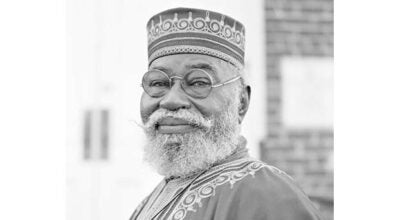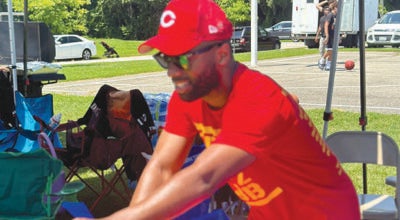Proposed PE School Budget Presented To County
Published 3:05 pm Tuesday, April 7, 2015
PRINCE EDWARD — County supervisors were formally presented with nearly a level funded school budget for the coming year last Tuesday. Though it still could mean—with the loss of several positions and other cuts—a 1.5 percent pay raise for all school employees under contract.
Now, the ball is in the board of supervisors’ court.
Supervisors can’t directly control school board spending in Virginia. Though they do approve local contributions and the school budget, they are limited to categorical funding — approving school funding by categories — that limits school flexibility in shifting monies between categories.
And, even though the requested $7.9 million in local funding would be nearly level, given dropping enrollments in recent years, the school board’s proposal faced scrutiny.
Buffalo District Supervisor C.R. “Bob” Timmons Jr. asked about class sizes. While Division Superintendent Dr. David Smith offered that it varies at each grade level, he said at the high school it’s a 10-1, closer to about 18 or 19-1 at the middle school, and he assessed about the same at the elementary school.
“Some classes are larger than others, obviously. I don’t have those exact numbers in front of me, but those are approximate,” Dr. Smith said.
Factoring 181 teachers and next year’s class projects, Timmons offered, that “gives you an average of 11 students per teacher. And if…you put the paraprofessionals in with that…that gives you an average…class size of 9.6 students per teacher/paraprofessional, which is a far cry from the numbers that you gave here.”
Timmons added that he wanted some “specific information.”
Teacher-pupil ratios are defined by the Department of Education recording requirements. Across different teacher assignment or teacher certification areas, there are some differing class size limits, Dr. Smith would later detail to The Herald.
One such area is in special education, where a pupil teacher ratio could, in some cases, be one to one.
Timmons also followed up on an earlier request for information on replacement savings created when teachers retire.
Over the last four years, Dr. Smith said, the average savings with the replacements was $85,900 per year. “And they varied across four years from $34,000 to $155,000. So there is…no predicting that number and there’s…no real pattern,” he said.
Staff members replaced every year are not just retirees, Dr. Smith cited. Staff members of all age and experience will leave, he said. Every time they are reducing positions, they try to do so through attrition, which means not all get replaced. As there is movement at the end of the school year, he cited, there is always a need to re-balance teachers and numbers and specific certifications. However, because of certification requirements, all teachers are not interchangeable.
“The other thing to keep in mind in the replacement of all staff members is that we consistently try to hire the highest quality person, as opposed to hiring the cheapest person,” Dr. Smith said. So, sometimes there is not a savings on any given position. Sometimes there are. Sometimes the replacement is more expensive.”
The $24,363,148 budget proposal is actually $531,219 less than last year’s approved budget. State revenues are projected to decrease $556,941.
Doing with less leaves some wish list items on the trimming floor, including $33,000 for a shift from a three to a two-tier salary schedule; $12,180 for a fourth camera on all school buses, $24,000 for a GPS system on all school vehicles; $18,000 to replace the greenhouse at the career technical center; nine kindergarten classroom aides, $270,000; $5,231 in maintenance requests, $18,500 for a webpage design service; and $44,260 for a middle school bookkeeper.
There was, however, some concern for the need for the kindergarten aides from several supervisors.
Farmville District (801) Supervisor Pattie Cooper-Jones clarified that there were no aides requested for the kindergarten classes.
“That is correct,” Dr. Smith responded. “The school board’s talked about that and looked for ways to try to find that and at the time they approved their budget, they weren’t seeing a way.”
Dr. Smith added that, as they looked for changes in the federal funding programs, if there’s any leeway that would allow them to transfer some of that, they were “open to that idea and we’ll be talking further about that with the school board.”
Cooper-Jones offered that it’s a “major concern because it’s really hard for a parent who has three children in her household to take care of three children and you’re asking a teacher to take of 17-22 students by herself. It’s almost impossible for them to get the foundation they need. If we don’t build up from the bottom, we’re gonna keep falling off at the top.”
Collectively, the school board has proposed a budget based on an ADM (average daily membership) of 2,035, 100 students less than the current school year.
The school board has also proposed cutting two elementary school teaching positions, two middle school teaching positions, one high school teaching position, two special education teaching positions, two education instructional aides, and materials.
School officials will look to make the reductions in positions through attrition, not as a reduction in force.
There has not only been a steady decline in pupil figures, but also a steady decline in combined state and federal funding. In 2009-10, the schools had a total $28,606,937 budget, which has fallen $3,682,952 (nearly 13 percent) to the current year.
The school board has also asked the County for $300,000 in capital improvement funding for bus replacements.





